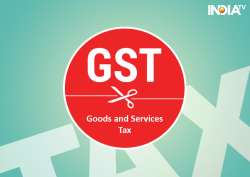GST: How India’s dual GST model stacks up against other countries
The Goods and Services Tax (GST), touted as biggest reform in India since independence, will be launched at 12 am tonight at the Central Hall of Parliament.

Only a few hours are left before the rollout of the ambitious Goods and Services Tax (GST), India's biggest tax reform since Independence, and there is anticipation and nervousness in equal measure on the impact it will have on the country’s economy. Though the GST roll-out is expected to boost the economy by at least 2 per cent in the coming years, analysts believe that the short-term impact of GST can be neutral or negative. In the long run, the GST will be beneficial to all as it is expected to help curtail tax evasion and check price rise. However, the rollout may impact first quarter earnings as business establishments adjust themselves and their systems to the new framework.
What is GST, rate lists, its impact and what it means for India
The government believes that the implementation of the new indirect tax regime will be a key component in improving ease of doing business. The GST, country’s biggest indirect tax reform since independence, will replace a slew of central and state levies, transforming the nation of 125 crore people into a customs union. As of now, India ranks at 130th out of 190 countries in the list of ease of doing business by the World Bank. Ever since the list was out, the PMO has been keenly working with government functionaries to improve its ranking. According to a report, the government has already made a strong pitch with the World Bank to improve its ranking, citing the implementation of the new indirect tax regime.
How GST will change the way businesses operate in India
The government has categorised 1211 items under tax slabs of 0 per cent, 5 per cent, 12 per cent, 18 per cent and 28 per cent. While the implementation of the tax reform in India may be historic for the scale of change that it envisages, it is not the first country to move to unified indirect taxation. Several countries, such as Australia, Malaysia, Singapore, Austria, New Zealand, Russia and China have already introduced the GST. However, it is the Canadian model of dual GST (central and state) implemented in 1991 that the Indian model of the indirect tax reform finds similarities with.
The basic difference
A single unified tax system is a global fiscal trend. Today, more than 150 countries worldwide have either VAT or GST. However, the one big difference between the Indian model of GST and similar taxes in other countries is the dual GST model. Many countries in the world have a single unified GST system, countries like Brazil and Canada have a dual GST system whereby GST is levied by both the federal and state or provincial governments. In India, a dual GST is proposed whereby a Central Goods and Services Tax (CGST) and a State Goods and Services Tax (SGST) will be levied on the taxable value of every transaction of supply of goods and services.
Goods and Services Tax: Complete list of items and their GST rates
Another difference is that the tax is payable at the final point of consumption, meaning that the ‘taxable event’ will be the ‘supply of goods’ and the ‘supply of services’. Hence, current taxable events such as ‘manufacture of goods’, ‘sale of goods’ and ‘ rendition of services’ will not be relevant under the GST regime.
Countries that implemented GST and their GST rates
France, the Western European country was the first country to implement GST in 1954. Today, the GST rate is 19.6 per cent. Most European countries introduced GST back in the 1970s-80s.
Canada introduced GST in 1991 at a rate of 5 per cent. The dual model was adopted by India. But Canada gives options to provinces to go for state or central GST.
From IT-readiness, rates impact to compliance: Top challenges in getting India GST-ready
China had implemented GST in 1994. In 2016, Beijing completed Value Added Tax (VAT) reforms to replace its conflicting Business Tax system. Doing away with business tax and other taxes and switching to VAT contributed to bursting of the Chinese real estate bubble.
Russia did it in 1991 whereas Saudi Arabia plans to do it in 2018.
Despite being a major economy in the world, the United States of America does not have GST. States, however, enjoy high autonomy in taxation.
Japan introduced consumption tax in 1989 at a rate of 3 per cent. In 1997 this was increased to 5 per cent and the Asian country went into recession. In 2012, it doubled the tax to 10 per cent, but delayed the tax increase to October 2019.
After 26 years of debate, Malaysia implemented GST in 2015 at 6 per cent.
Australia introduced GST in 2000. The implementation was quite smooth compared to other countries. The rate was fixed at 10 per cent. However, it now plans to increase GST rate to 15 per cent.
New Zealand introduced GST in 1986 at a rate of 10 per cent. The rates were changed twice – 12.5 per cent in 1989 and 15 per cent in 2010.
Singapore introduced GST in 1994 at a rate of 7 per cent. Initially, inflation spiked but eased eventually. The GST is the second largest source of government revenue after corporate I-T.
Austria introduced GST at a rate of 20 per cent, Sweden at 25 per cent and Pakistan at 18 per cent.